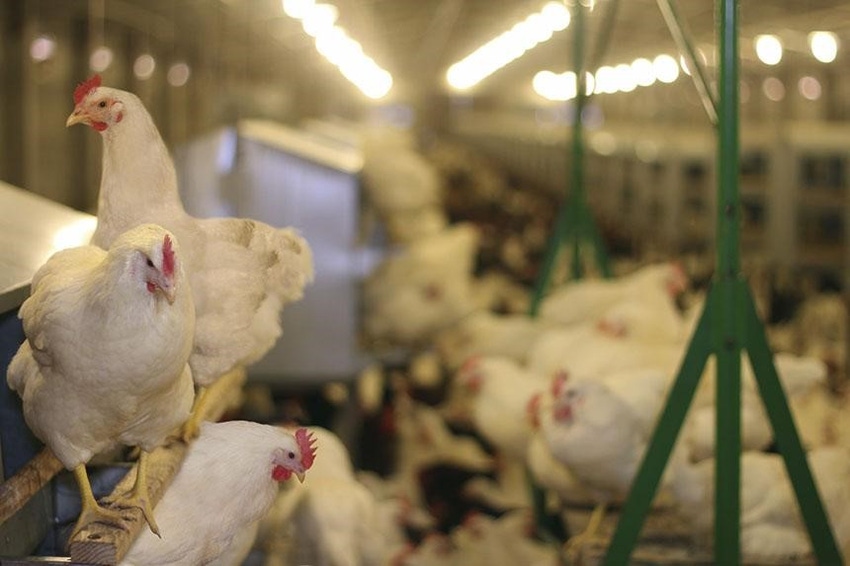University of California-Davis animal welfare experts test ways to reduce broken bones in cage-free hens.

In 2017, nearly 16% of all hens in the U.S. were in cage-free production. According to the U.S. Department of Agriculture, about 75% of all laying hens will need to be cage free by 2026 to meet market demand, the University of California-Davis (UC-Davis) said in an announcement.
Cage-free housing is more spacious for hens, but the extra room comes with added risks of collisions and broken bones. Many cage-free hens are developing breast or “keel” bone fractures when they misjudge the distance between perches and platforms and collide with other birds and features in their environment, UC-Davis explained.
Now, a team of animal welfare experts from UC-Davis is leading efforts to explore whether complex rearing systems for chicks can reduce bone fractures. Funded by a $432,000 grant from the Foundation for Food & Agriculture Research (FFAR), the project will measure whether an active upbringing can help chicks develop stronger bones as well as cognitive and navigational abilities, the university said.
“With improved navigational skills, hens may be less likely to collide with other birds en route to food and water,” said Maja M. Makagon, an assistant professor with the UC-Davis department of animal science who is leading a team of collaborators from UC-Davis, Iowa State University, the University of Bristol in the U.K. and the University of Bern in Switzerland.
When landings fail
Laying hens have experienced keel bone fractures for decades, but the incidence is rising as more flocks are raised in open, multi-tier systems. “Cage free” can mean different things on different farms, but typically, cage-free birds flap around in large, vertical, enclosed spaces to reach food, perches and nesting areas, UC-Davis explained. Today’s hens are not especially adept at flying, and sometimes their landings fail.
Broken keel bones are assumed to be painful. Research shows that when hens are given a choice of feed, those with broken bones will select feed laced with anti-inflammatory medication, the researchers said, noting that there is also evidence that fractures can affect egg quality.
Farmers have various ways of raising chicks in the first 16 weeks of life. Some farmers rear chicks in flat, enclosed spaces, like on a barn floor, and others raise chicks in multi-tiered systems.
Makagon and her team will test whether birds reared in more complex, multi-tiered settings will fare better in cage-free housing, UC-Davis said.
“We hypothesize that if you expose birds to environments that are vertical in nature, two things will happen: Keel bones will develop stronger, and birds will be better at navigating space,” she said.
The team will measure the prevalence of keel bone damage on a broad scale at commercial farms in the U.S. and identify the relationship between rearing environment and keel bone strength.
Then, researchers will conduct similar tests on a small scale at UC-Davis by rearing chicks in pens with different levels of vertical complexity and evaluating how that affects a bird’s keel bone development and cognitive and navigational skills.
Team effort
Makagon is working with UC-Davis assistant cooperative extension specialist Richard Blatchford and assistant professor Kristina Horback, both with the Center for Animal Welfare in the department of animal science. Project members also include Suzanne Millmann, professor of biomedical sciences at Iowa State University; John Tarlton, professor of regenerative medicine at the University of Bristol, and Michael Toscano, group leader at the Center for Proper Housing: Poultry & Rabbits at the University of Bern.
FFAR is funding two additional grants to address the health and productivity of laying hens. In one, Purdue University will test whether nutritional interventions can strengthen bones, and in the other, the University of Edinburgh in Scotland will expand efforts to breed hens with stronger bones.
About the Author(s)
You May Also Like

.png?width=300&auto=webp&quality=80&disable=upscale)

